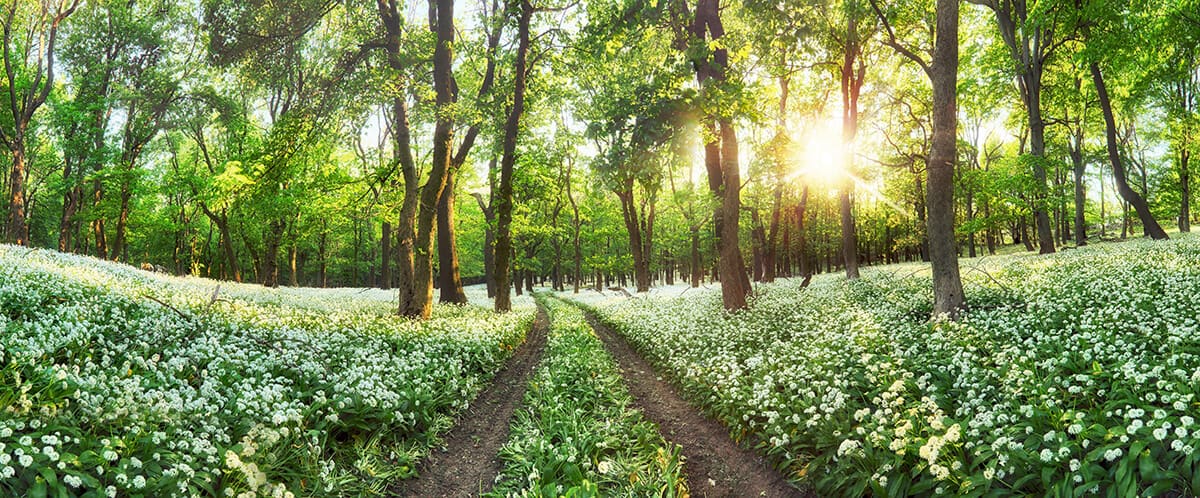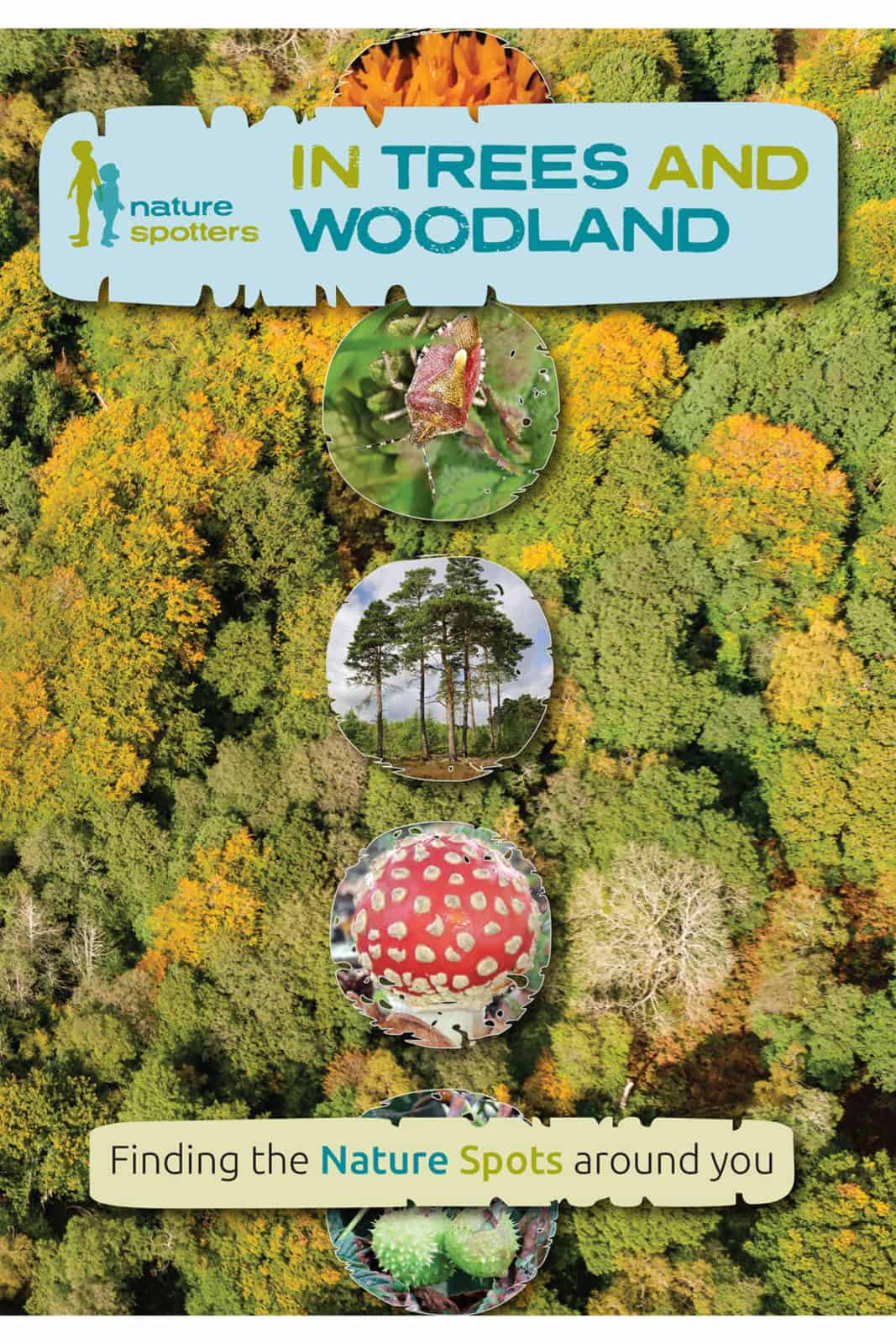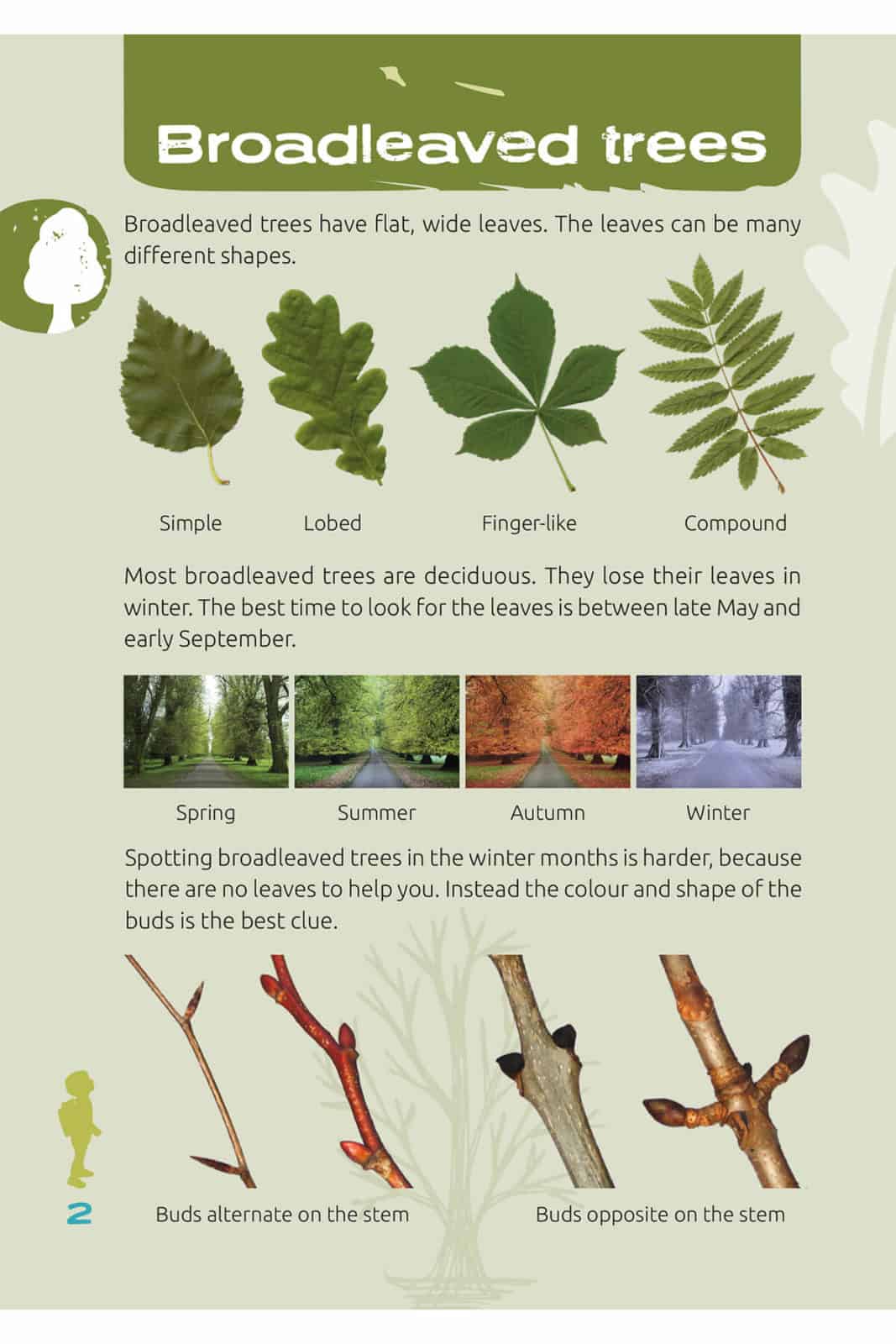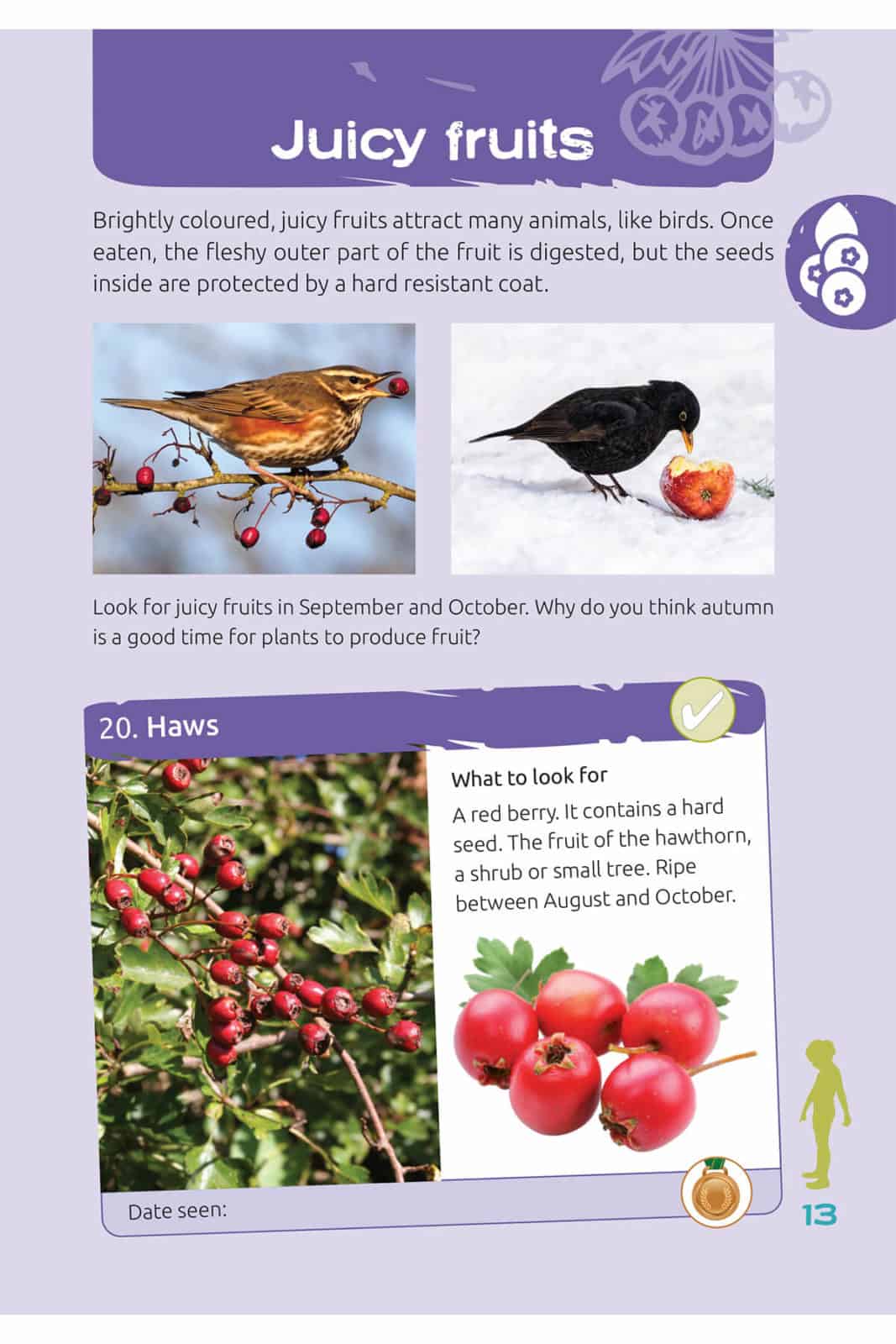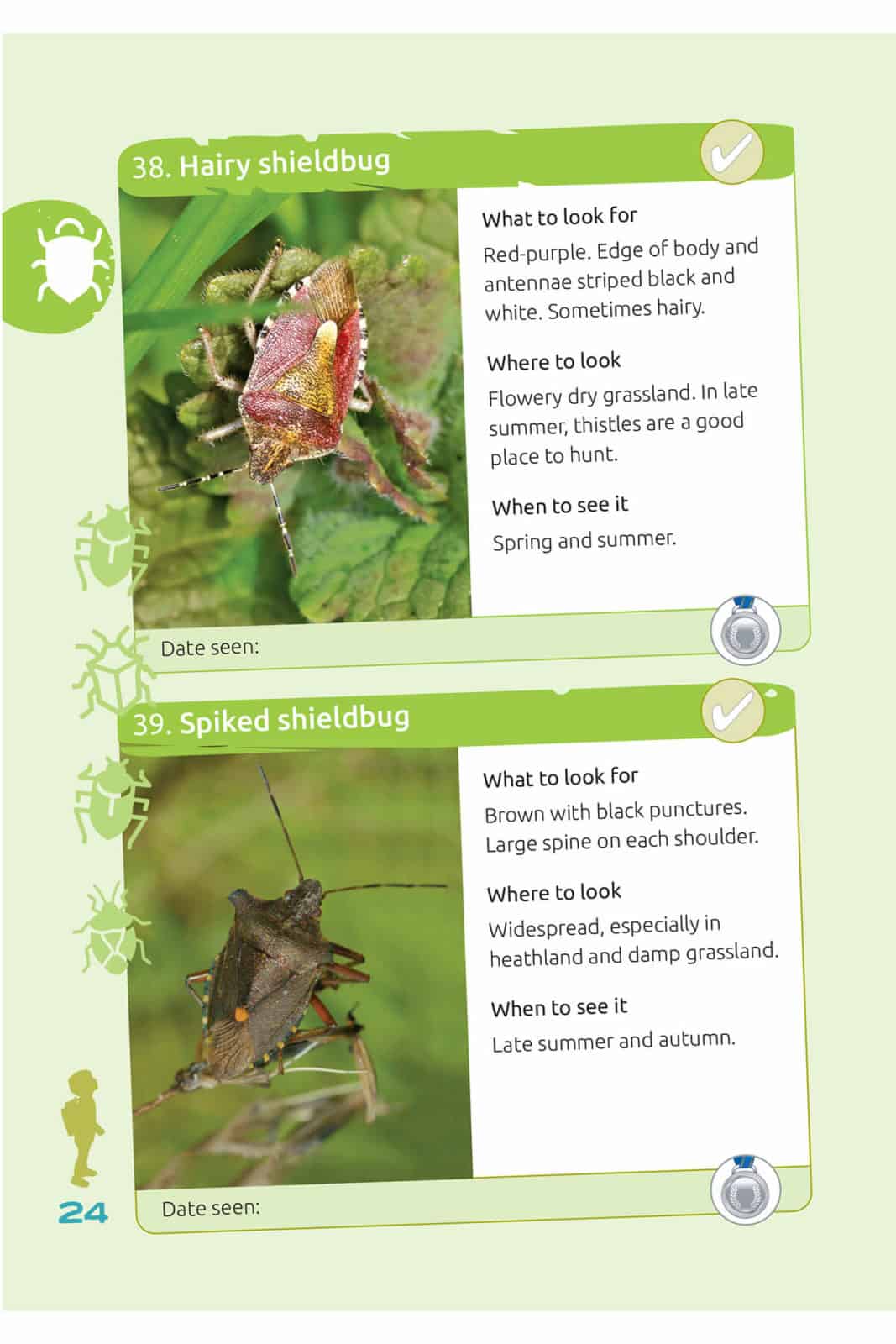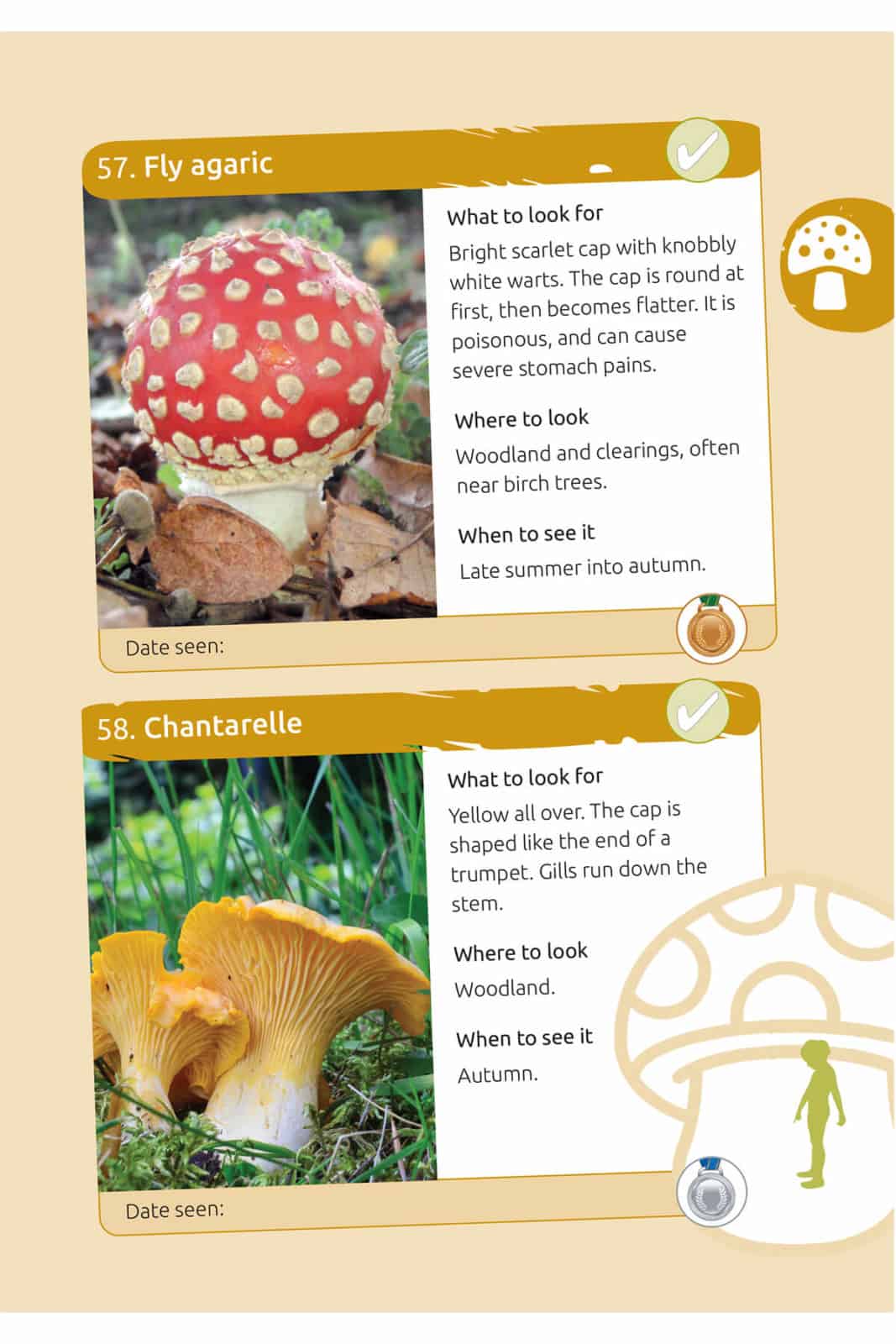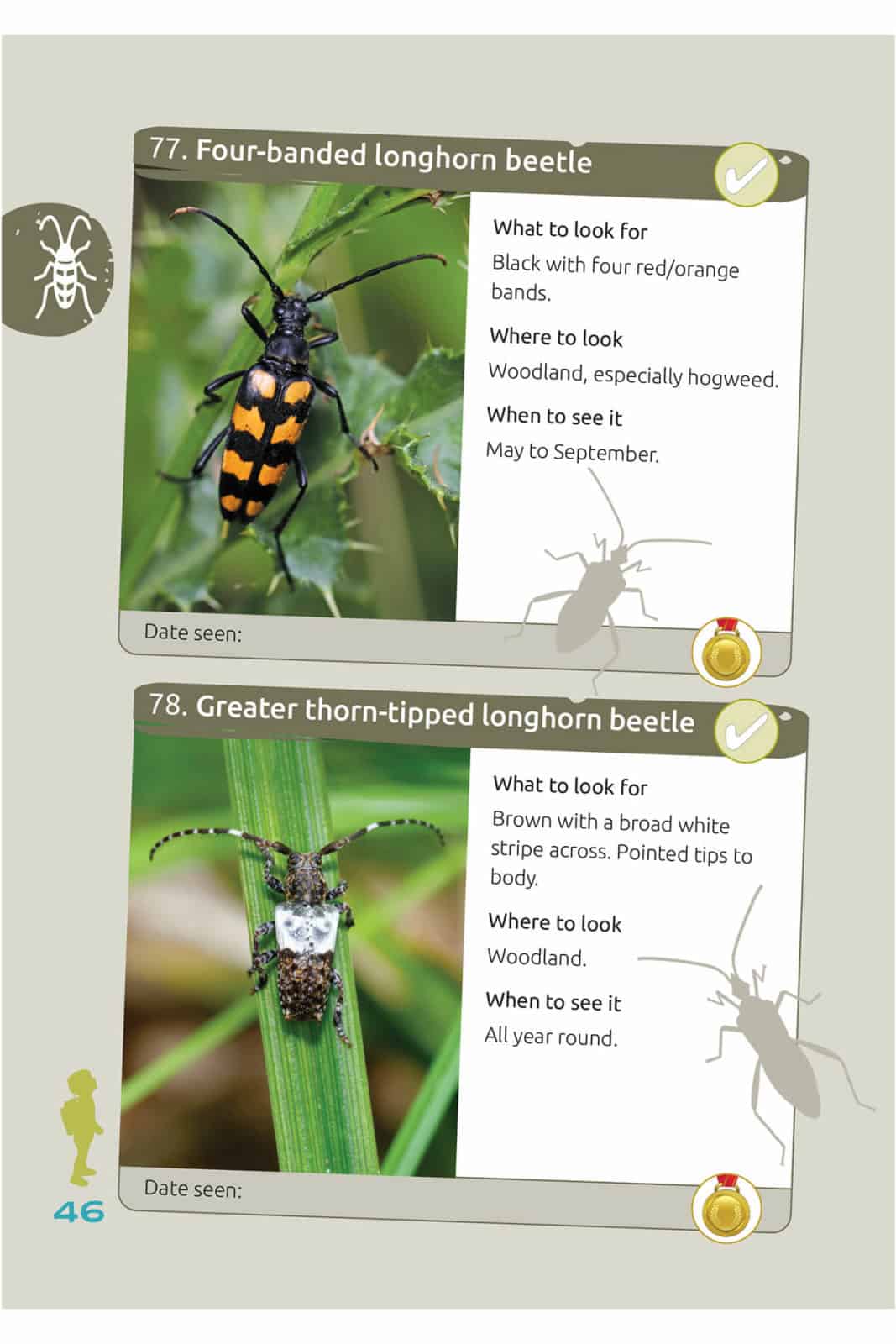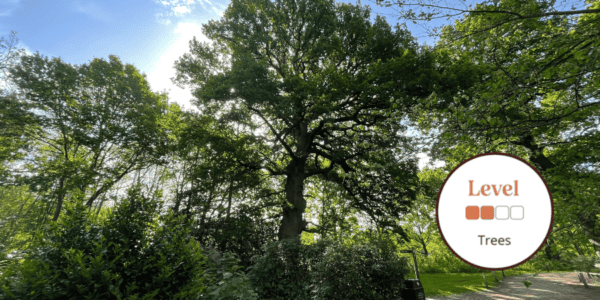Nature spotters in trees and woodland
Head out to the countryside and explore trees, woods and forests. Can you find all 80 Nature Spots?
Our Children’s Nature Spotting Paperback book will help identify your tree and woodland finds, and provides a handy recording sheet to note down and tick off each one as they are spotted!
From broadleaved and conifer trees to wildflowers, shieldbugs and fungi, each one will win you a bronze, silver or gold medal. There are Nature Spots to see all year round, even in the winter. How many will you find? There are 8 different places to look…
- Broadleaved trees – Most broadleaved trees are deciduous. They lose their leaves in winter. But we’ve included a guide to bark and twigs, so you can spot these trees even without their leaves.
- Conifer trees – Most conifer trees are evergreen so you can spot them all year round.
- Juicy fruits – Many plants produce brightly-coloured fleshy fruit. September and October are the best times.
- Takeaways and flyaways – Takeaway fruits and seeds, like acorns, are carried away by small animals. Flyaway fruits, like sycamore samaras, are carried away by the wind.
- Shieldbugs – These are big brightly-coloured insects. Hawthorn, oak and birch trees, dock plants, brambles and thistles are all good places to look.
- Woodland flowers – A woodland walk is a good chance to spot wildflowers. April and May are the best times.
- Fabulous fungi – Mushrooms and toadstalls are most common in the autumn, after the first rainy storms and before the heavy frosts of winter.
- Looking for longhorns – Longhorn beetles are some of the most spectacular insects in Britain and Ireland. But they are not uncommon. Hawthown and hogweed flowers are a great place to hunt.

